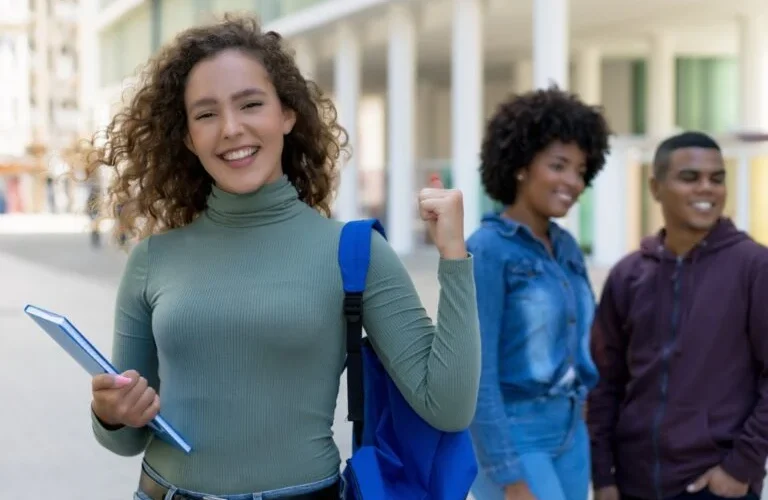As a freshman or sophomore, you may have received your university schedule and noticed that many slots are allocated for tutorials, seminars, and lectures.
If your course involves many practicals, you should expect to have regular workshops. Interestingly, universities recognize the importance of answering students’ questions and provide designated times for you to visit and ask questions.
As a student, if you encounter academic and personal difficulties, take advantage of drop-in sessions, which exist as a support system to ensure your success.
This article provides detailed information on this valuable informal resource for students seeking assistance outside the classroom.
Table of contents
What are Drop-in Sessions?
Drop-in sessions are often called office hours. They are designated periods when students can visit their professors, academic advisors, or support staff without needing a pre-scheduled appointment.
These sessions allow students to ask questions, seek clarification, and receive guidance on academic matters, career choices, or personal concerns.
It’s a flexible way to get quick assistance and guidance without a formal meeting arrangement.
Read Also: What Happens if You Fail a Module at University? See What To Do
How Do Drop-in Sessions Work?
Drop-in sessions provide a convenient way for students to seek quick assistance and advice without pre-scheduled appointments.
Students can show up during the specified hours and wait their turn to meet with the available staff member.
The sessions are usually brief, typically lasting around 15 to 30 minutes, ensuring that multiple students can be accommodated within the allocated time.
Drop-in sessions at universities typically work in the following manner:
- Designated Time: The university designates specific times when drop-in sessions are available. These time slots are usually listed on the university’s website, departmental notice boards, or communicated by advisors.
- No Appointments: Unlike formal appointments, drop-in sessions do not require scheduling a meeting in advance. You can show up during the designated drop-in hours.
- Location: Drop-in sessions are held in designated spaces, such as advisors’ offices, counselling centres, or specific rooms within academic departments. The exact location is usually provided along with the schedule.
- Arrival: When you arrive at the designated location during drop-in hours, there might be a sign-in sheet or a waiting area. You may need to wait if other students are briefly ahead of you.
- Meeting Duration: Drop-in sessions are typically short, lasting around 10 to 15 minutes per student. Advisors aim to address quick questions and concerns to accommodate everyone during the session.
- Purpose: Drop-in sessions are meant to address immediate and brief concerns. You can ask questions about course selection, academic planning, assignment clarification, career advice, or any other relevant topic.
- Once it’s your turn, you’ll have a one-on-one interaction with the advisor or staff member. You can discuss your questions or concerns, and they will provide guidance, information, or solutions.
Read Also: How Long is a Semester? A Student’s Guide University Semesters
What are the Benefits of Drop-in Sessions?
Drop-in sessions are a convenient and effective way to bridge the gap between students and university support services. It ensures timely assistance and fosters a positive academic experience.
Drop-in sessions provide a flexible way for students to seek assistance without needing advance scheduling.
Students can also get quick answers to specific questions without waiting for a formal appointment. Drop-in sessions offer designated time slots to accommodate students’ busy schedules.
Besides, advisors and staff can address multiple students’ concerns quickly. This efficient approach allows them to assist a larger number of students.
Students can build relationships with advisors and staff members, enhancing their networking opportunities within the university community.
Related Article: Can a Student Get a Credit Card? Requirements
Types of Drop-in Sessions
You can attend a session for one or more of the following purposes:
- Academic Advising: Academic advisors conduct drop-in sessions to assist students in planning their academic journey. Whether selecting the right courses for a major or discussing strategies for academic success, these sessions provide crucial guidance.
- Career Guidance: Drop-in sessions focusing on career guidance help students explore potential career paths, review their resumes, practice interview skills, and receive insights into industry trends. This support enhances students’ preparedness for entering the job market.
- Mental Health Support: Universities also recognize the importance of mental health. Drop-in sessions with trained counsellors provide students with a safe space to discuss their emotional well-being, manage stress, and seek advice on maintaining a healthy mental state.
Read also: Do Universities Have Half Term? A Guide to University Holidays
Preparing for a Drop-in Session
Preparing for a drop-in session at your university can help you maximize the limited time available.
If you are going for a drop in session for the first time, follow this preparatory guide.
- Identify Your Concern: Clearly define what you need assistance with. Whether it’s a question about a specific assignment, course selection, or academic planning, having a clear focus will help you get relevant guidance.
- Gather Relevant Materials: Collect any relevant documents, assignments, syllabi, or notes that pertain to your concern. These materials can provide context and make it easier for the advisor to assist you.
- Make a List of Questions: Jot down the specific questions you want to ask during the session. This will ensure you cover all the important points and don’t forget anything during the conversation.
- Check Drop-In Hours: Verify the designated drop-in hours for the advisor or department you intend to visit. Arrive during those hours to ensure you’re seen.
- Arrive Early: If you can, arrive early at the drop-in location. This can help you avoid a long wait if others are ahead of you.
- Be Concise: Since drop-in sessions are brief, practice delivering your questions and concerns concisely. Avoid unnecessary details that might consume valuable time.
- Be Open to Advice: Be receptive to the guidance and suggestions provided by the advisor. They are there to help and might offer insights you hadn’t considered.
- Stay Calm and Polite: Approach the session calmly and respectfully. Politeness goes a long way in establishing a positive interaction.
- Ask for Clarification: If you don’t understand something the advisor says, don’t hesitate to ask for clarification. It’s important to leave the session clearly, understanding the guidance provided.
- Consider Follow-Up: If your concern is complex and can’t be fully resolved in a short session, inquire about possibly scheduling a follow-up appointment.
Read also: When Do University Starts in UK? University Terms and Academic Calendar 2024 – 2025
How Do I Make the Most of a Drop-in Session?
Preparing a list of targeted questions will help you make the most of your drop-in session. This will ensure that you cover all the areas you need assistance with and make the most of the limited time available.
Don’t hesitate to discuss your concerns about a particular class, assignment, or career choice during the session. Advisors are there to listen and provide insights that can alleviate your concerns.
If you’ve received feedback on an assignment or project and need further clarification, a drop-in session is an excellent opportunity to seek additional explanations. Engaging in open dialogue can help you grasp concepts more effectively.
What to Expect During a Drop-in Session
Drop-in sessions typically have an informal atmosphere, which can help ease any anxieties you might have about seeking assistance.
The approachable environment encourages open communication. Also, unlike formal lectures, drop-in sessions involve interactive discussions.
Advisors may ask questions to understand your situation better, ensuring their guidance is relevant and tailored.
Related: Successful Good Excuse for Academic Appeal Letter Samples
FAQs
Drop-in sessions are typically free for students as part of the university’s support services.
Drop-in sessions are often open to all students, regardless of their department or major.
Drop-in sessions typically last around 15 to 30 minutes per student.
Bringing relevant documents, such as transcripts or resumes, is a good idea if your inquiry requires specific information.
Absolutely, drop-in sessions can provide support for various concerns, including mental health and career planning.
Conclusion
Conclusively, drop-in sessions are a valuable resource universities offer to support students’ academic, career, and personal development.
They provide immediate assistance, flexibility, and personalized guidance, contributing to a successful university journey.
References
- Thinkstudent.co.uk – What is a Drop-in Session at Uni?
- Thestudentroom.co.uk – What’s a drop in session?





